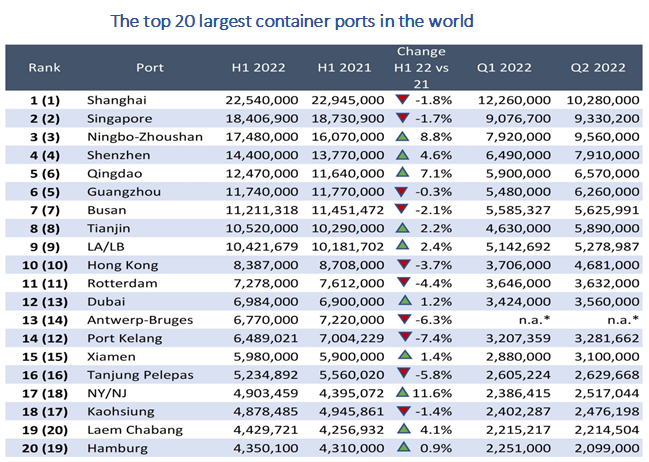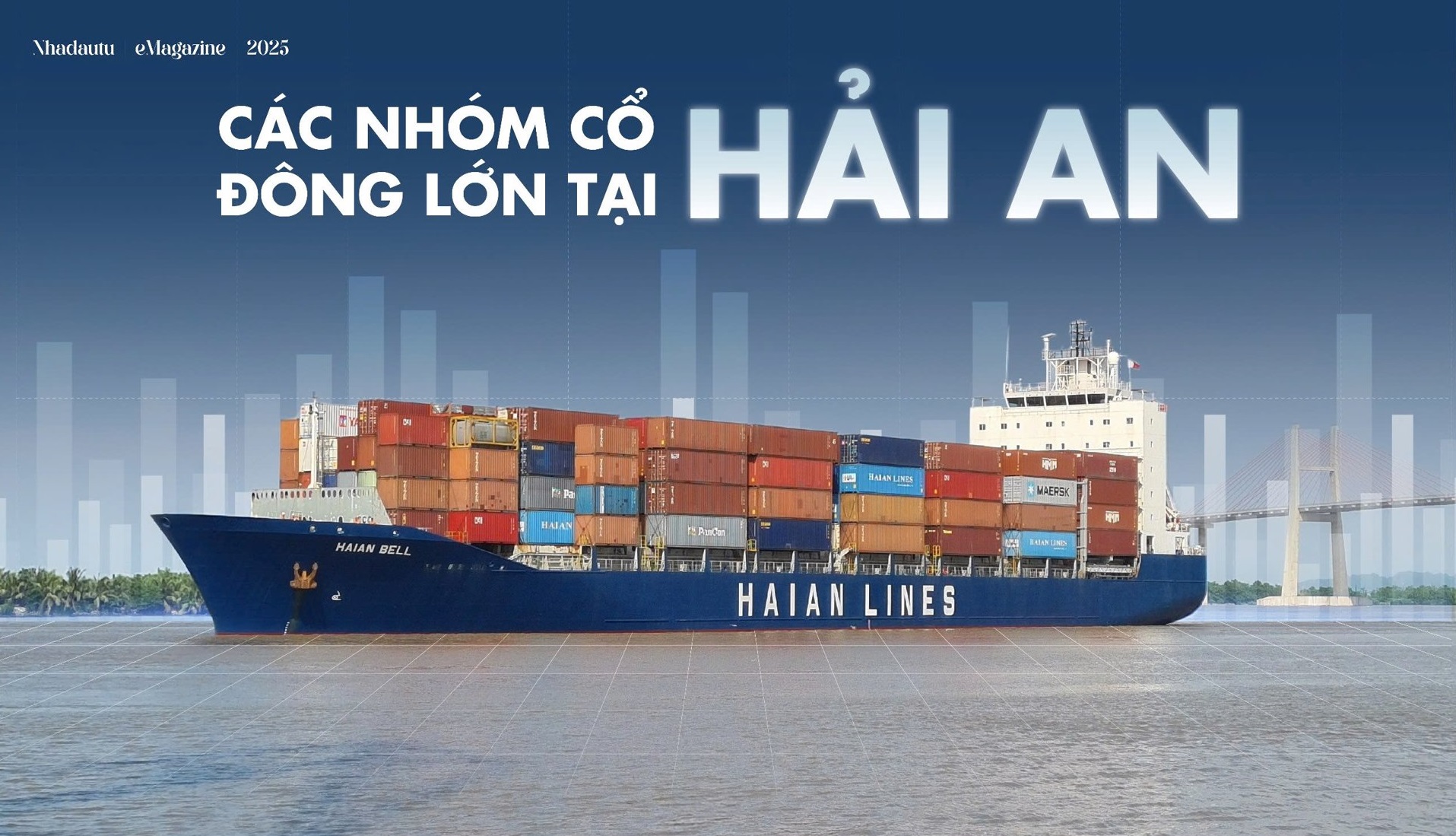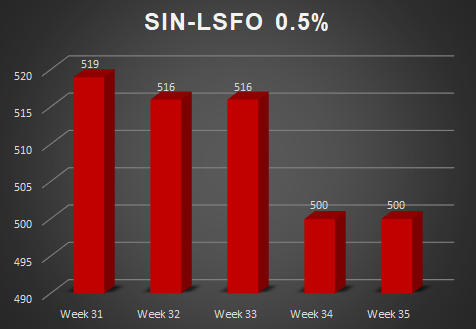Maritime Market News
News Highlights week: 38 - 2022
Ngày đăng: 23/09/2022 | Lượt xem: 667
TS Lines returns to Haiphong with JTK-2 service
TS Lines will start serving Haiphong again with its weekly JapanTaiwan - Hong Kong ‘JTK-2’ service. Haiphong will be added in October, one year after the Vietnamese port was dropped from the loop.
The revised rotation of the 'JTK-2' service will take in Tokyo, Yokohama, Nagoya, Osaka, Kobe, Keelung, Taichung, Kaohsiung, Haiphong, Shekou, Hong Kong, Tokyo.
The extended loop will turn in three weeks versus two currently, with a third vessel of about 1,000 teu expected to join the service.
China’s Ningbo-Zhoushan edges closer to Singapore
The top 20 largest container ports in the world handled 194.8 Mteu in the first half of 2022 versus 192.6 Mteu in H1 2022, a year-on-year increase of 1.1%. Total throughput rose at 11 ports (of which 7 were located in China or the US), while 9 ports recorded volume declines.

There were no new entrants to the top 20 during the period although growth at individual ports varied widely. This ranged at the bottom end from –7.4% at Port Kelang to +11.6% at New York/New Jersey at the top.
For once Shanghai did not extend its lead on Singapore during the period, a factor in 2021, and both ports recorded similar year-on-year declines of around 2%.
In Europe, figures at Antwerp were distorted by the port’s merger in April with Bruges and Zeebrugge. The combined entity Antwerp Bruges recorded container throughput of 6.77 Mteu in H1, or a decline of 6.2%.
The greater volumes from the expanded port operation, however, pushed the port up to 13th place, overtaking Port Kelang.
This contrasted with Hamburg which recorded minor growth of 0.9% but slipped a ranking after volumes grew 4.1% at Thailand’s Laem Chabang.
Overall, Qingdao, Dubai and Antwerp-Bruges moved up one ranking, while Guangzhou, Hamburg and Port Kelang lost ground, the latter by two notches.
China’s eight ports represented 53% of total throughput for the leading 20 ports in the period, a figure that is likely to grow further as the country funnels traffic towards a smaller number of hub ports.
Booming transpacific volumes have brought half-year throughput at China’s second largest port Ningbo-Zhoushan to within 1 Mteu of Singapore, the number two ranked port globally.
The gap between the two ports narrowed to 1.08 Mteu in the first six months of 2022, versus 2.7 Mteu in the same period a year ago and 4 Mteu prior to the pandemic. Indeed Ningbo-Zhoushan even overtook Singapore in Q2 though figures were undoubtedly boosted by the extraordinary Shanghai lockdowns in April and May.
Ningbo-Zhoushan has benefited from restrictions at its lock-down hit neighbour Shanghai, with many carriers diverting ships to avoid delays and trucking issues. However the port continued to grow in July, at 3.28 Mteu, up 26% on the year before, even as volumes bounced back at Shanghai.
Overall, Shanghai posted a decline of 1.8% over the first half of the year, while Ningbo-Zhoushan logged growth of nearly 9%
MKT
Chỉ số Thị trường
Tin nổi bật
-

-
Các nhóm cổ đông lớn tại Hải An
Ngày 10/09/2025
-

-
Thông báo về việc giao dịch chứng khoán thay đổi niêm yết
Ngày 29/08/2025
-

-
Quyết định thay đổi đăng ký niêm yết
Ngày 29/08/2025
















